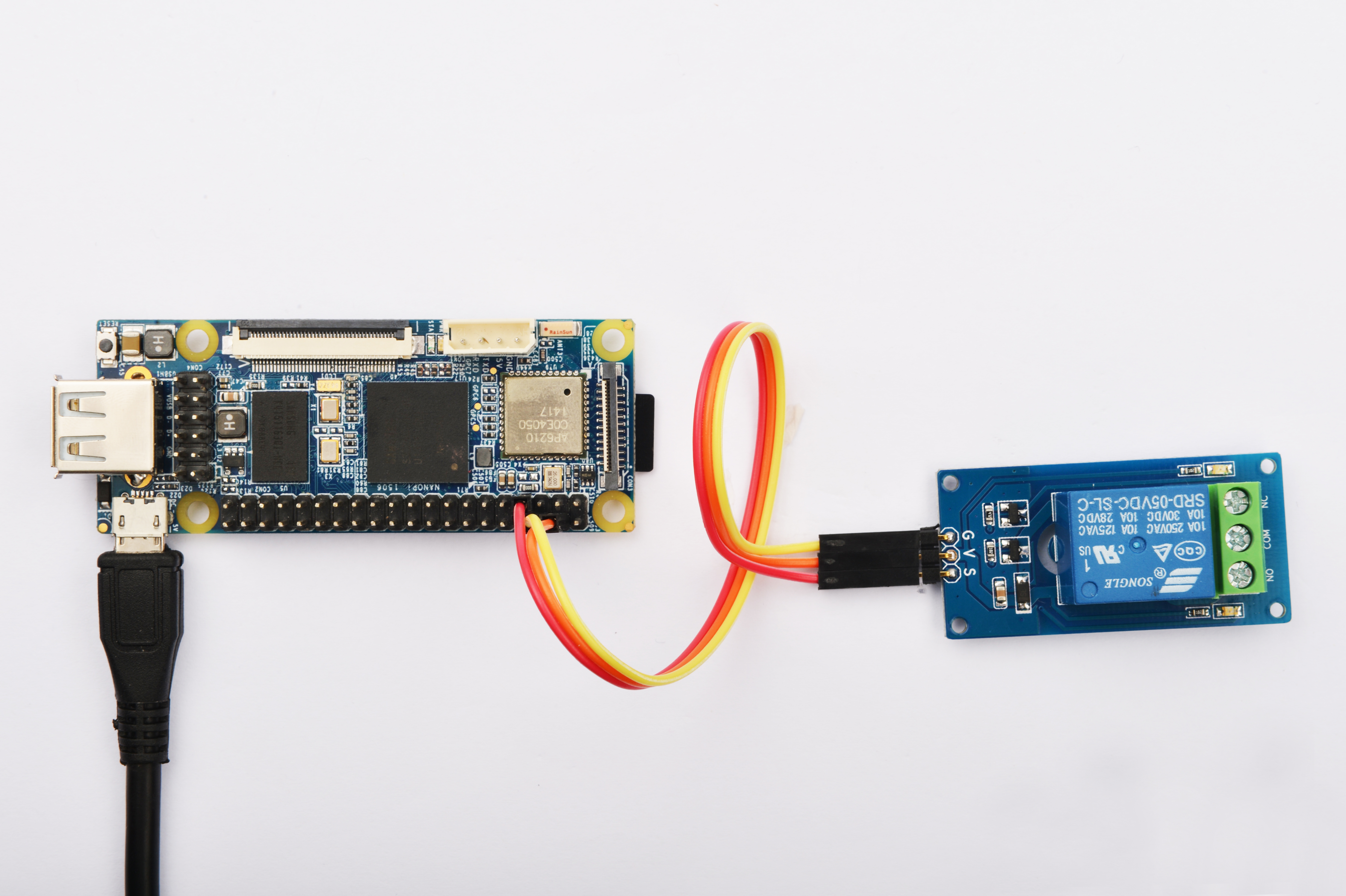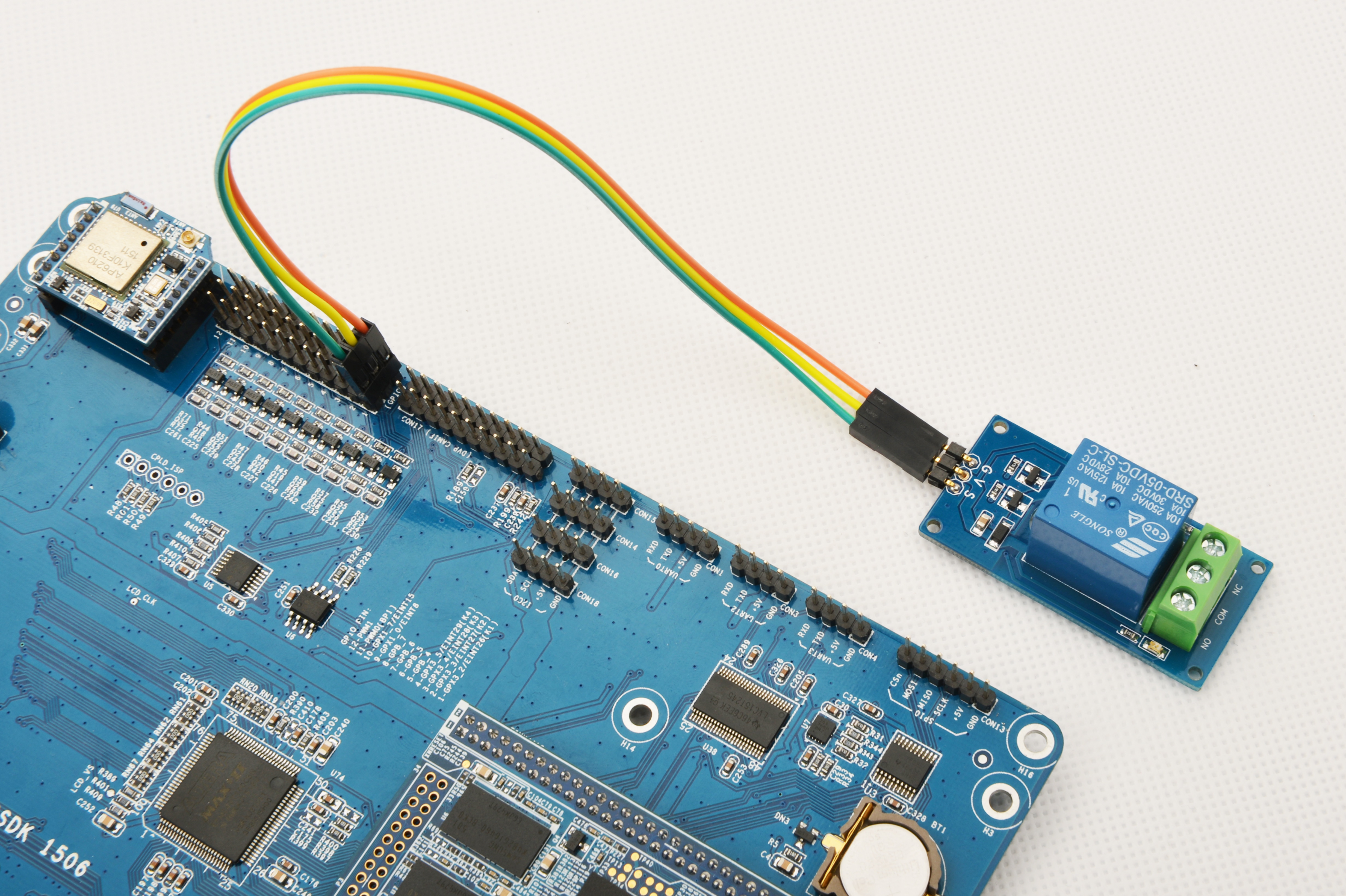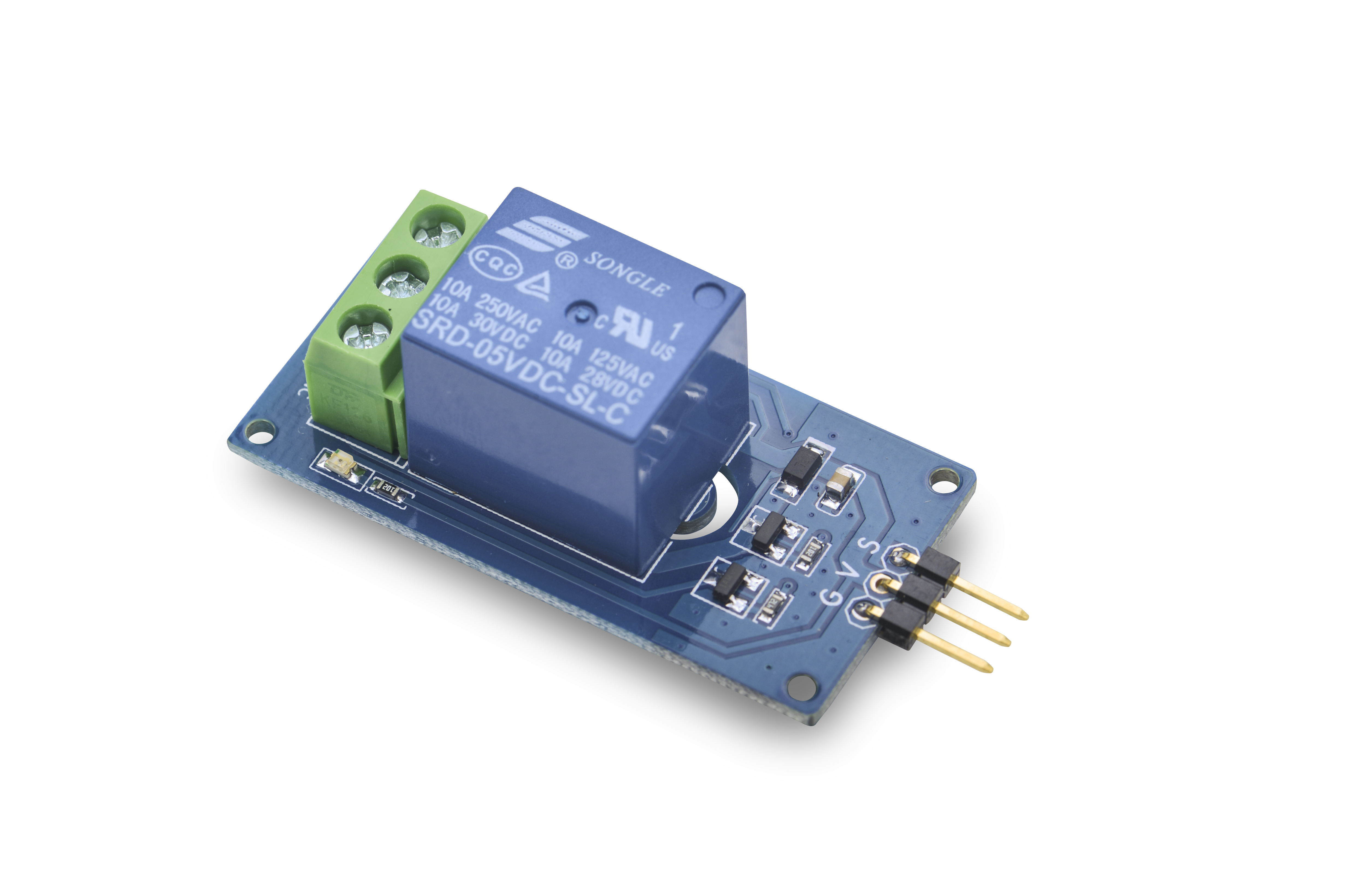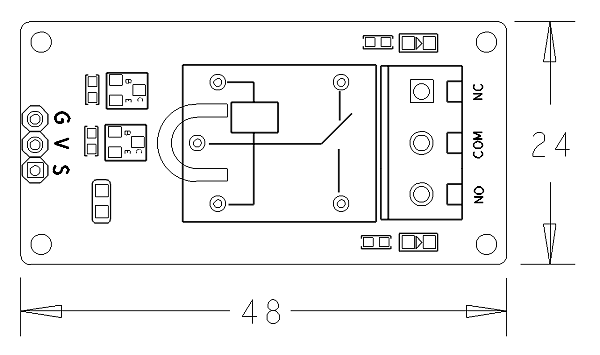Difference between revisions of "Matrix - Relay"
| Line 106: | Line 106: | ||
</syntaxhighlight> | </syntaxhighlight> | ||
| − | === | + | ===Code Sample=== |
<syntaxhighlight lang="c"> | <syntaxhighlight lang="c"> | ||
#include <stdio.h> | #include <stdio.h> | ||
| Line 140: | Line 140: | ||
</syntaxhighlight> | </syntaxhighlight> | ||
| − | == | + | ==Connect to Tiny4412== |
| − | === | + | ===Preparations=== |
| − | + | Please refer to the Tiny4412's user's manual to install a UbuntuCore on the Tiny4412 and install an appropriate cross compiler on a PC.<br> | |
| − | + | Note: only the Tiny4412SDK-1506 carrier board can work with this module. | |
| − | === | + | ===Hardware Connection=== |
| − | + | Please refer to the following diagram to connect the Matrix-Relay to the Tiny4412 <br> | |
[[File:matrix-relay_tiny4412.jpg|frameless|600px|matrix-relay_tiny4412]] | [[File:matrix-relay_tiny4412.jpg|frameless|600px|matrix-relay_tiny4412]] | ||
| − | + | Connection Details: | |
{| class="wikitable" | {| class="wikitable" | ||
|- | |- | ||
| Line 162: | Line 162: | ||
| − | === | + | ===Compile Test Program=== |
| − | + | Please login the Matrix hub and enter the matrix-tiny4412 branch | |
<syntaxhighlight lang="bash"> | <syntaxhighlight lang="bash"> | ||
$ cd matrix | $ cd matrix | ||
| Line 169: | Line 169: | ||
</syntaxhighlight> | </syntaxhighlight> | ||
| − | + | Compile the matrix code | |
<syntaxhighlight lang="bash"> | <syntaxhighlight lang="bash"> | ||
$ make CROSS_COMPILE=arm-linux-gnueabihf- clean | $ make CROSS_COMPILE=arm-linux-gnueabihf- clean | ||
| Line 175: | Line 175: | ||
$ make CROSS_COMPILE=arm-linux-gnueabihf- install | $ make CROSS_COMPILE=arm-linux-gnueabihf- install | ||
</syntaxhighlight> | </syntaxhighlight> | ||
| − | + | Note: please make sure to install the cross compiler "arm-linux-gnueabihf-gcc-4.7.3" on your PC, which is used to compile files for the Tiny4412-UbuntuCore.<br> | |
| − | + | Generated library files are under the "install/lib" directory. Applications are under the "install/usr/bin" directory. The test program for the "Matrix-Relay" module is "matrix-relay". | |
| − | === | + | ===Run Test Program=== |
| − | + | Please copy the library files and test program to the Tiny4412 | |
<syntaxhighlight lang="bash"> | <syntaxhighlight lang="bash"> | ||
$ cp install/usr/bin/* tiny4412_rootfs/usr/bin/ | $ cp install/usr/bin/* tiny4412_rootfs/usr/bin/ | ||
| Line 185: | Line 185: | ||
</syntaxhighlight> | </syntaxhighlight> | ||
| − | + | Power on the Tiny4412 and run the following command in UbuntuCore's terminal <br> | |
<syntaxhighlight lang="bash"> | <syntaxhighlight lang="bash"> | ||
$ matrix-relay | $ matrix-relay | ||
</syntaxhighlight> | </syntaxhighlight> | ||
| − | === | + | ===Code Sample=== |
<syntaxhighlight lang="c"> | <syntaxhighlight lang="c"> | ||
#include <stdio.h> | #include <stdio.h> | ||
| Line 224: | Line 224: | ||
</syntaxhighlight> | </syntaxhighlight> | ||
| − | == | + | ==Connect to RaspberryPi== |
| − | == | + | ==Connect to Arduino== |
| − | == | + | ==Resources== |
[http://www.micro4you.com/files/sensor/DHT11.pdf DHT11.pdf] | [http://www.micro4you.com/files/sensor/DHT11.pdf DHT11.pdf] | ||
Revision as of 09:55, 24 September 2015
Contents
1 Introduction
- 模块Matrix-Relay这是一个单刀双掷继电器,通常应用于自动控制电路中,它实际上是用较小的电流去控制较大电流的一种“自动开关”。故在电路中起着自动调节、安全保护、转换电路等作用。
2 Features
- 1 Form C
- 5V线圈电压,控制信号为3.3/5V
- 触点电流可达10A
- LED指示
- 2.54mm排针接口,接线方便,通用性强
- PCB尺寸(mm):24x48
- Pin Description:
| Pin | Description |
| S | GPIO |
| V | Supply Voltage 5V |
| G | Ground |
3 Basic Device Operation
这是一个单刀双掷继电器,线圈电压为直流5V,触点电流可达10A,适合驱动直流或交流大功率负载。NO为常开触点,NC为常闭触点,COM为公共触点。当向S引脚施加高电平,继电器线圈导通,此时NO触点断开,NC触点闭合。
4 Download Matrix Source Code
All the matrix modules' code samples are open source. They are maintained on GitHub - git://github.com/friendlyarm/matrix.git
Each branch in this hub contains the matrix modules' code samples for a board that the matrix modules can work with.
- The nanopi branch contains the matrix modules' code samples for the NanoPi
- The tiny4412 branch contains the matrix modules' code samples for the Tiny4412
- The raspberrypi branch contains the matrix modules' code samples for the RaspberryPi
Please follow the steps below to get the source code:
Install the git utility on a PC running Ubuntu14.04
$ sudo apt-get install git
Clone the matrix code from GitHub
$ git clone git://github.com/friendlyarm/matrix.git
If this is successful a "matrix" directory will be generated, which will contain all the matrix modules' code samples.
5 Connect to NanoPi
5.1 Preparations
Please install a Debian on a NanoPi and an appropriate cross compiler on a PC. Please refer to wiki:NanoPi
Compile a NanoPi kernel. Note: please use the kernel's source code from the nanopi-v4.1.y-matrix branch.
$ git clone https://github.com/friendlyarm/linux-4.x.y.git $ cd linux-4.x.y $ git checkout nanopi-v4.1.y-matrix $ make nanopi_defconfig $ touch .scmversion $ make
5.2 Hardware Connection
Please refer to the following connection diagram to connect the Matrix-Relay to the NanoPi

Connection Details:
| Matrix-LED | NanoPi |
| S | Pin7 |
| V | Pin4 |
| G | Pin6 |
5.3 Compile Test Program
Please login the matrix hub and enter the nanopi branch
$ cd matrix $ git checkout nanopi
Compile the matrix code
$ make CROSS_COMPILE=arm-linux- clean $ make CROSS_COMPILE=arm-linux- $ make CROSS_COMPILE=arm-linux- install
Note: please make sure to install the cross compiler "arm-linux-gcc-4.4.3" on your PC, which is used to compile files for the NanoPi-Debian.
Generated library files are under the "install/lib" directory. Applications are under the "install/usr/bin" directory. The test program for the "Matrix-Relay" module is "matrix-relay".
5.4 Run Test Program
Please copy the library files and test program to the NanoPi
$ cp install/usr/bin/* nanopi_rootfs/usr/bin/ $ cp install/lib/* nanopi_rootfs/lib/ -d
Power on the NanoPi and run the following command in Debian's terminal
$ matrix-relay5.5 Code Sample
#include <stdio.h> #include <string.h> #include "libfahw.h" int main(int argc, char ** argv) { char *status = "off"; if (argc != 2) { printf("Set relay on\n"); } else { status = argv[1]; printf("Set relay %s\n", argv[1]); } int pin = GPIO_PIN1; int ret = -1; if ((ret = exportGPIOPin(pin)) != 0) { printf("exportGPIOPin(%d) failed!", pin); } if ((ret = setGPIODirection(pin, GPIO_OUT)) != 0) { printf("setGPIODirection(%d) failed", pin); } if (strcmp(status, "on") == 0) { ret = setGPIOValue(pin, GPIO_HIGH); } else if (strcmp(status, "off") == 0) { ret = setGPIOValue(pin, GPIO_LOW); } return ret; }
6 Connect to Tiny4412
6.1 Preparations
Please refer to the Tiny4412's user's manual to install a UbuntuCore on the Tiny4412 and install an appropriate cross compiler on a PC.
Note: only the Tiny4412SDK-1506 carrier board can work with this module.
6.2 Hardware Connection
Please refer to the following diagram to connect the Matrix-Relay to the Tiny4412

Connection Details:
| Matrix-LED | Tiny4412 |
| S | GPIO1 S |
| V | GPIO1 5V |
| G | GPIO1 GND |
6.3 Compile Test Program
Please login the Matrix hub and enter the matrix-tiny4412 branch
$ cd matrix $ git checkout tiny4412
Compile the matrix code
$ make CROSS_COMPILE=arm-linux-gnueabihf- clean $ make CROSS_COMPILE=arm-linux-gnueabihf- $ make CROSS_COMPILE=arm-linux-gnueabihf- install
Note: please make sure to install the cross compiler "arm-linux-gnueabihf-gcc-4.7.3" on your PC, which is used to compile files for the Tiny4412-UbuntuCore.
Generated library files are under the "install/lib" directory. Applications are under the "install/usr/bin" directory. The test program for the "Matrix-Relay" module is "matrix-relay".
6.4 Run Test Program
Please copy the library files and test program to the Tiny4412
$ cp install/usr/bin/* tiny4412_rootfs/usr/bin/ $ cp install/lib/* tiny4412_rootfs/lib/ -d
Power on the Tiny4412 and run the following command in UbuntuCore's terminal
$ matrix-relay6.5 Code Sample
#include <stdio.h> #include <string.h> #include "libfahw.h" int main(int argc, char ** argv) { char *status = "off"; if (argc != 2) { printf("Set relay on\n"); } else { status = argv[1]; printf("Set relay %s\n", argv[1]); } int pin = GPIO_PIN1; int ret = -1; if ((ret = exportGPIOPin(pin)) != 0) { printf("exportGPIOPin(%d) failed!", pin); } if ((ret = setGPIODirection(pin, GPIO_OUT)) != 0) { printf("setGPIODirection(%d) failed", pin); } if (strcmp(status, "on") == 0) { ret = setGPIOValue(pin, GPIO_HIGH); } else if (strcmp(status, "off") == 0) { ret = setGPIOValue(pin, GPIO_LOW); } return ret; }

